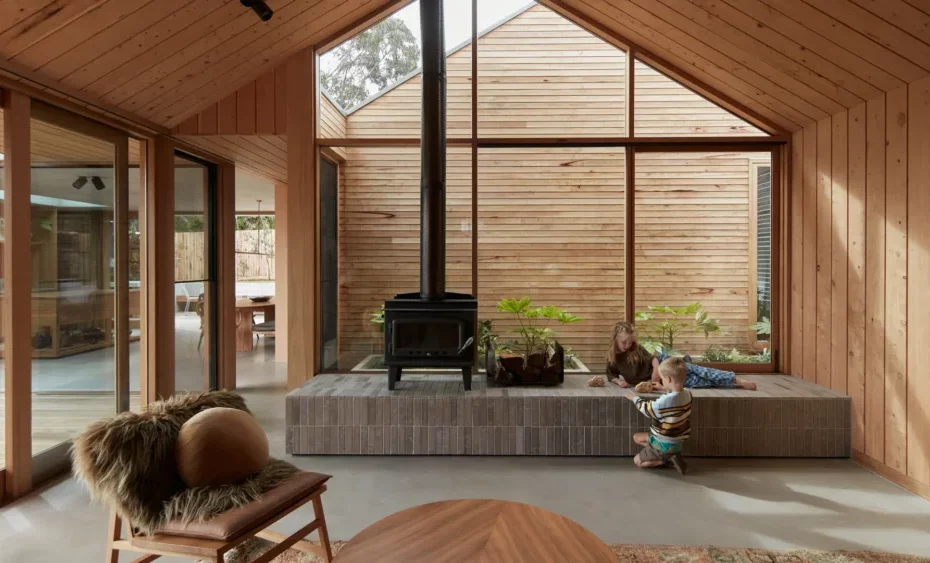How To Perfect A Warm, Wabi-Sabi Style Interior
Interiors
Little More House. Nectre Fireplace on bench tiled in Perini Tiles. Sheepskin throw from Hides of Excellence. Custom vegan leather cushion by Olive Stone Upholstery. Styling – Sawsee. Photo – Willem-Dirk du Toit.
‘Wabi-sabi’ is a Japanese philosophy that looks to find the beauty in imperfection and impermanence.
Interiors that are designed with this wabi-sabi sensibility evoke a feeling of unstudied comfort, where the focus is on natural, organic materials, quality craftsmanship and a sense of calm.
Here are five suggestions for how to explore a sense of wabi-sabi style in your own home:
Start your material selection with your flooring. Ideally you want to choose a material that feels wonderful under bare feet. You may feel momentarily awkward, but don’t be afraid to take your shoes off in flooring showrooms to really make sure you like how a surface feels. Seek out textured finishes with a bit of movement that remind you of walking outside in nature. This same approach applies to the purchase of rugs — you want rugs that invite, or more so command, you to take your shoes off and laze around.
Incorporate natural elements into your space. Look for timbers with lovely grain; stone surfaces showing the textures and cracks of time; metals with raw finishes that will continue to patina; organic woven fibres and imperfect forms.
Embrace tertiary colours in all of their muted and moody glory. Once you have chosen a key colour for your space, expand on that colour within a tonal range to create an immersive sense of repetition. You can then bring in complementary and contrasting tones to add texture and interest. If you get stuck, there are some little Japanese colour dictionaries that can help with colour schemes as well as a great Instagram account that creates colour palettes from films.
Choose locally made pieces. One of the beauties of the wabi-sabi philosophy is that it is equally suited to maximalist or minimalist interiors. The key to it working well is to incorporate at least one well-crafted hero piece that shows the experienced hand of an artisan. This can be as small as a beautiful ceramic vessel or as big as a locally-made dining table.
Avoid downlights. Instead look to create shadows and varying pools of light that can be dimmed and adjusted to create intimate and moody zones. Wall lights are wonderful for ambiance and pendant lights create a zoned sense of intimacy. Use downlights only where task lighting is needed and be sure to have them installed on a separate electrical circuit.
Additional credits for moodboard (from center): Burnt timber bowl by Makiko Ryujin from Sophie Gannon Gallery. Large ceramic with dimples by Issy Parker. ‘Bush Capital’ artwork by Nyssa Braid from Brunswick Street Gallery.
